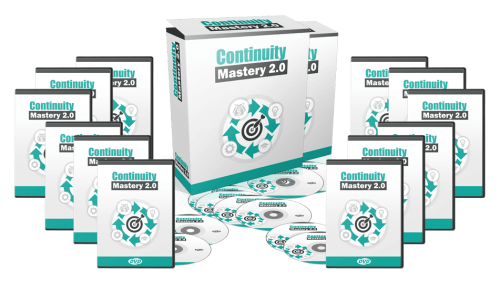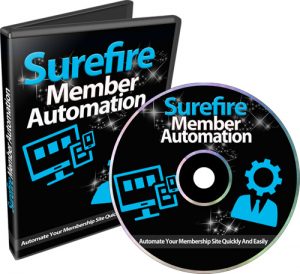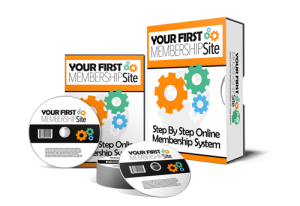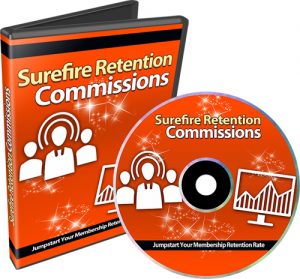
As you develop your site, you are bound to make errors, blunders and gaffes. Several of these mistakes are so common, we know there is a good chance you will run into them. Save time and trouble by reviewing them below and learn how to tackle them.
Not Collecting Email Addresses
Always get e-mail addresses. Marketers often say “The money is in the list.” That means you can profit handsomely by offering valuable products and solutions to your email list.
People still check their e-mail regularly. It’s a good way to communicate with your members, fans and followers. Gone are the days of doing it yourself. Use a service like Mail Chimp or AWeber. You can create a free account that allows you to send a limited number of e-mails every month. As your list grows, you can sign up for a premium account to handle larger email blasts.
A good way to get people to sign up for your e-mail list is to offer free reports or other valuable incentives. Basically you’re saying, “Give me your e-mail address so I can communicate with you, and you can get this valuable free content.”
Not Using Google Analytics
Google Analytics is a free service that helps you analyze your site’s traffic. It provides many useful statistics including:
- Which content is most attractive
- Where your visitors come from
- How they navigate your site
- How long they stay on the site
- The “bounce rate” which indicates how many people visit only one page and leave.
These analytics are important because they help you learn how to adapt your site for better conversions. Install Google Analytics as soon as possible after building your site. There are several Google Analytics plugins which make it easy to add the service.
Another alternative is to use Jetpack which is a plugin that accesses the power of WordPress.com. You need to have a WordPress.com account and install the Jetpack plugin. It will give you basic stats, but Google Analytics is a recognized industry leader. Whichever you choose, make sure it is up and running, and each week check to make sure it is still installed and pulling data.
Poor Security
Most WordPress sites could use much better security. Experts call it “hardening the site,” in other words making it hard for hackers, crackers and crooks to get in your site.
Don’t take this lightly. Hackers know how to hide nasty viruses DEEP in your site where they are very hard to find. The evil code sits there and slowly steals your content, personal data and bandwidth. Worse, they are very hard to get rid of. The best way to prevent potential problems is to keep them out in the first place.
Here are several security plugins you should immediately put to use. You may know other plugins that perform similar functions. That’s fine—the important thing is to lock down your site as soon as possible:
- A newer security plugin on the WordPress scene, it has gained a lot of fans in a short time. One of its unique features is that it compares your site’s core, theme and plugins to the same packages on the WordPress download repository. If there is anything different, it may mean a hacker changed one of your important files, and Wordfence will send you an email alert.
- Login Lockdown. Lets you limit the number of login attempts. This is especially useful in defeating “brute force” login hackers, who use special software to try thousands of login names and passwords on your site, one right after another at high speed. After a set number of attempts, Login Lockdown shuts them out for quite sometime.
- TimThumb Vulnerability TimThumb is PHP code that helps resize images. Hackers were able to get access sites through holes in this code. Now the problem is fixed in the code, but thousand of blogs were penetrated by hackers, and many people never knew. The TimThumb Vulnerability Scanner scans your site to make sure no baddies got in.
- Exploit Similar to the TimThumb scanner, but it is not designed to handle one problem. Rather, Exploit Scanner checks for all kinds of potential hacks, viruses and trojans in your files and database.
Not Changing Default Settings
A standard WordPress install has default settings you should change as soon as possible. In the Settings menu you should change site title, tagline and “permalinks.”
- Site title – what is the title of your site? Change this to reflect the name of your site. Example: “Jim’s Super Internet Marketing “
- Tagline – this expands on what your site is about. Do you have a slogan, saying or tagline? For the above example, the tagline might be “Internet marketing training for newbies ”
- Permalinks – Also make sure you set the permalinks which is found under the settings. Use the “post name” selection, which turns the URL from gibberish into easy to read words–easier to find for both humans and search engines.
Not Targeting Exact Keywords
Google likes WordPress sites not just because they are WordPress, but because they make it easy to add content. Google LOVES fresh content. You need to tell search engines what each page is about. Designate keywords for each page so that Google knows the topic.
When you optimize each page with keywords, your site will rank higher in the search results. An easy way to do this is with the plugin “WordPress SEO by Yoast.” You can enter specifications so that each page and post it represented in a certain way. It will also check if the keywords you specify are represented properly. If not, it instructs you where to change the entries so that the keywords are entered correctly. It’s drop dead easy.
No Backup
Always, always, always backup your site and database. Backups allow you to roll back your site in case some sort of virus or Trojan infiltrates your site. Also, WordPress is constantly updating new versions, and there might be a situation where it breaks your site. If you have a backup, it is easy to quickly go to the latest backup.
The easiest way to backup your site is with plugins. You can find some very good free and paid backup plugins: Backup Buddy is a popular paid version, and BackWPup, BackUpWordPress and Snapshot Backup are excellent free choices. There are many others.
Once you’ve scheduled the backup calendar in the plugin you choose, it is done and you don’t have to think about it too much. It will backup every week automatically, or whatever the backup schedule is. Many plugins are designed to save the scheduled backup file on a folder on your site. That means you need plenty of space to accommodate backups, so make sure you buy enough disk space on your hosting plan.
Slow Site
WordPress manages content with a database which makes it naturally dynamic. Data is going in and out all the time–long load times are common. To help speed things up, add a caching plugin. Caching stores the most frequently requested data so the database can retrieve it quickly.
To optimize each page and post, you can use pingdom.com (https://www.pingdom.com/) and GTmetrix.com (http://gtmetrix.com/ )to see
how fast your site is–both sites tell you if your site is loading slowly and where it can be optimized. Use a cache plugin like a W3 Total Cache or Lite Cache to speed things up.
Content Not Shareable
People will share content if it is high quality and useful. You don’t want to put lousy content on your site. Focus on creating value that helps people find answers to problems or entertains them in some way.
After you’ve created great content, make it easy to share on social media. Creating great content and making it shareable will generate traffic to your site. A simple way to do this is to install a plugin called Sociable or to use the Jetpack plugin which also has sharing capabilities.
Takeaways
- Collect email addresses as soon as possible. “The money is in the ” list.
- Sign up for Google Analytics, and install a related plugin on your Every week, review your site data to understand your strengths and weaknesses.
- Harden your site: Install the recommended security plugins, and keep them up to date. The best way to deal with hackers is to never let them in at all costs.
- Change the default settings. The suggested changes make your site easier to read and surf.
- Determine your target Keywords are important because they pull in relevant web searchers to your site every day.
- Backup, backup, backup. Did I say backup?
- Pick up the speed. WordPress sites are data Use caching plugins to speed things up.
- Share your Listen to what your mother said and share your things. Add Sociable or other social sharing plugins to help drive traffic and increase engagement.
Membership sites are a great way to build community, distribute content, present training material, manage support services, and build stable revenue. Your task now is to start a membership site as soon as possible. Don’t wait until everything is perfect. Take this information and put it into action. Then adjust, tweak, modify and fine-tune your effort as you go. You’ll be surprised how fast you can build a powerful membership site that your members love and generates income you can count on.















 ,/p>
,/p>

